*NURSING > QUESTIONS & ANSWERS > Review Test Submission: Quiz - Week 10 exam practice questions and answers complete solution scored (All)
Review Test Submission: Quiz - Week 10 exam practice questions and answers complete solution scored 39 out of 40
Document Content and Description Below
Review Test Submission: Quiz - Week 10 exam practice questions and answers complete solution scored 39 out of 40 Question 1 0 out of 0 points When completing this quiz, did you comply with ... Walden University’s Code of Conduct including the expectations for academic integrity? Question 2 1 out of 1 points A nurse is describing the trigone. Which information should be included? The trigone is defined as: Question 3 1 out of 1 points A 2-year-old male is diagnosed with Wilms tumor. Which of the following clinical conditions is often associated with this disease? Question 4 1 out of 1 points A 15-year-old female presents with flank pain, irritability, malaise, and fever. Tests reveal glomerulonephritis. When the parents ask what could have caused this, how should the nurse respond? Question 5 1 out of 1 points A nurse observes on the chart that a patient is admitted with Wilms tumors. A nurse knows the tumors are found in the: Question 6 1 out of 1 points When the nurse discusses the glomerulus and Bowman capsule together, it is referred to as the renal: Question 7 0 out of 1 points A 3-year-old female presents with recurrent urinary tract infections (UTIs), fever, poor growth and development, and feeding problems. Tests reveal a retrograde flow of urine from the urinary bladder into the ureters. When giving report to the oncoming shift, the nurse will call this condition: Question 8 1 out of 1 points A 19-year-old female was involved in a motor vehicle accident during which she sustained a closed head injury. She is now experiencing detrusor sphincter dyssynergia. Which of the following is the most beneficial medication treatment? Question 9 1 out of 1 points A 24-year-old female is diagnosed with renal calculus that is causing obstruction. Which of the following symptoms would she most likely experience? Question 10 1 out of 1 points A 29-year-old female presents with cloudy urine, flank pain, hematuria, and fever. Which of the following does the nurse suspect the patient is most likely experiencing? Question 11 1 out of 1 points While planning care for a patient with renal calculi, the nurse remembers the most important factor in renal calculus formation is: Question 12 1 out of 1 points When describing the male urinary anatomy, which information should the nurse include? The portion of the male urethra that is closest to the bladder is the _____ portion. Question 13 1 out of 1 points A 25-year-old female presents with burning urination. She was diagnosed with a urinary tract infection. When the nurse checks the culture results, which of the following organisms is most likely infecting her urinary tract? Question 14 1 out of 1 points If a nurse wants to obtain the best estimate of renal function, which test should the nurse monitor? Question 15 1 out of 1 points A urologist is discussing the phagocytic cells that lie between the layers of the renal corpuscle. What is the urologist describing? Question 16 1 out of 1 points A nurse is preparing to teach about the loop of Henle. Which information should be included? The descending segment of the loop of Henle primarily allows for: Question 17 1 out of 1 points When a child is admitted with acute renal failure, a clinician realizes the most common cause of acute renal failure is: Question 18 1 out of 1 points A 30-year-old male is demonstrating hematuria with red blood cell casts and proteinuria exceeding 3 to 5 g/day, with albumin being the major protein. The most probable diagnosis the nurse will see documented on the chart is: Question 19 1 out of 1 points A 7-year-old male presents to his primary care provider for incontinence. His mother indicates that he has never been continent. Which of the following is the most likely diagnosis the nurse will observe on the chart? Question 20 1 out of 1 points A 30-year-old male is demonstrating hematuria with red blood cell casts and proteinuria exceeding 3 to 5 g/day, with albumin being the major protein. The most probable diagnosis the nurse will see documented on the chart is: Question 21 1 out of 1 points A 15-year-old male was diagnosed with pharyngitis. Eight days later he developed acute glomerulonephritis. While reviewing the culture results, which of the following is the most likely cause of this disease? Question 22 1 out of 1 points A 35-year-old hypertensive male begins taking a diuretic. Which of the following common side effects of this medication should the nurse monitor? Question 23 1 out of 1 points A urologist is discussing a structure that supplies blood to the medulla. What is the urologist describing? Question 24 1 out of 1 points A 5-year-old male was diagnosed with glomerulonephritis. History reveals that he had an infection 3 weeks before the onset of this condition. The infection was most likely located in the: Question 25 1 out of 1 points The urologist is teaching about the nephrons that determine the concentration of the urine. The urologist is discussing the _____ nephrons. Question 26 1 out of 1 points While planning care for a patient who has acute pyelonephritis. A nurse recalls the most common condition associated with the development of acute pyelonephritis is: Question 27 1 out of 1 points A 6-year-old male is experiencing urine reflux from the urinary bladder into a grossly dilated ureter and calyces. He was diagnosed with vesicoureteral reflux. This condition would be graded: Question 28 1 out of 1 points When a nurse is checking the urinalysis, plasma proteins should be absent from the urine because: Question 29 1 out of 1 points A 75-year-old male reports to his primary care provider loss of urine with cough, sneezing, or laughing. Which of the following is the most likely diagnosis the nurse will observe on the chart? Question 30 1 out of 1 points When a nurse is preparing to teach about urine, which information should the nurse include? Just before entering the ureter, urine passes through the: Question 31 1 out of 1 points A 42-year-old female is diagnosed with chronic renal failure, and the nurse is discussing dietary treatment. Which information indicates the nurse understands dietary regimen? Treatment includes restricting: Question 32 1 out of 1 points When a newborn is admitted with urinary tract infections (UTIs), which type of infection will the nurse look for in the newborn? Question 33 1 out of 1 points A 42-year-old male is involved in a motor vehicle accident during which he loses a lot of blood. The nurse realizes he is in acute renal failure caused by: Question 34 1 out of 1 points A 56-year-old male presents with flank pain and polyuria. Tests reveal that he has an enlarged prostate. Which of the following types of renal failure should the nurse monitor for as it is the most likely to occur? Question 35 1 out of 1 points A 4-year-old male is diagnosed with nephrotic syndrome. Which of the following assessment findings accompanies this condition? Question 36 1 out of 1 points A 35-year-old female was severely burned and is hospitalized. She is now suffering from acute tubular necrosis (ATN). Which of the following is the most likely diagnosis the nurse will observe on the chart? Question 37 1 out of 1 points While turning a patient with chronic renal failure, which principle should the nurse recall? Bone fractures are a risk factor in chronic renal failure because: Question 38 1 out of 1 points A 25-year-old female is diagnosed with urinary tract obstruction. While planning care, the nurse realizes that the patient is expected to have hydronephrosis and a decreased glomerular filtration rate caused by: Question 39 1 out of 1 points When the nurse is discussing the sodium-sensing cells of the glomerulus, what term should the nurse use? Question 40 1 out of 1 points Which of the following clusters of symptoms would make a clinician suspect a child has developed glomerulonephritis? Question 41 1 out of 1 points A 45-year-old female presents with hypertension, anorexia, nausea and vomiting, and anemia. She is diagnosed with chronic renal failure. When the patient asks what caused this anemia, how should the nurse respond? Your anemia is caused by: [Show More]
Last updated: 1 year ago
Preview 1 out of 12 pages
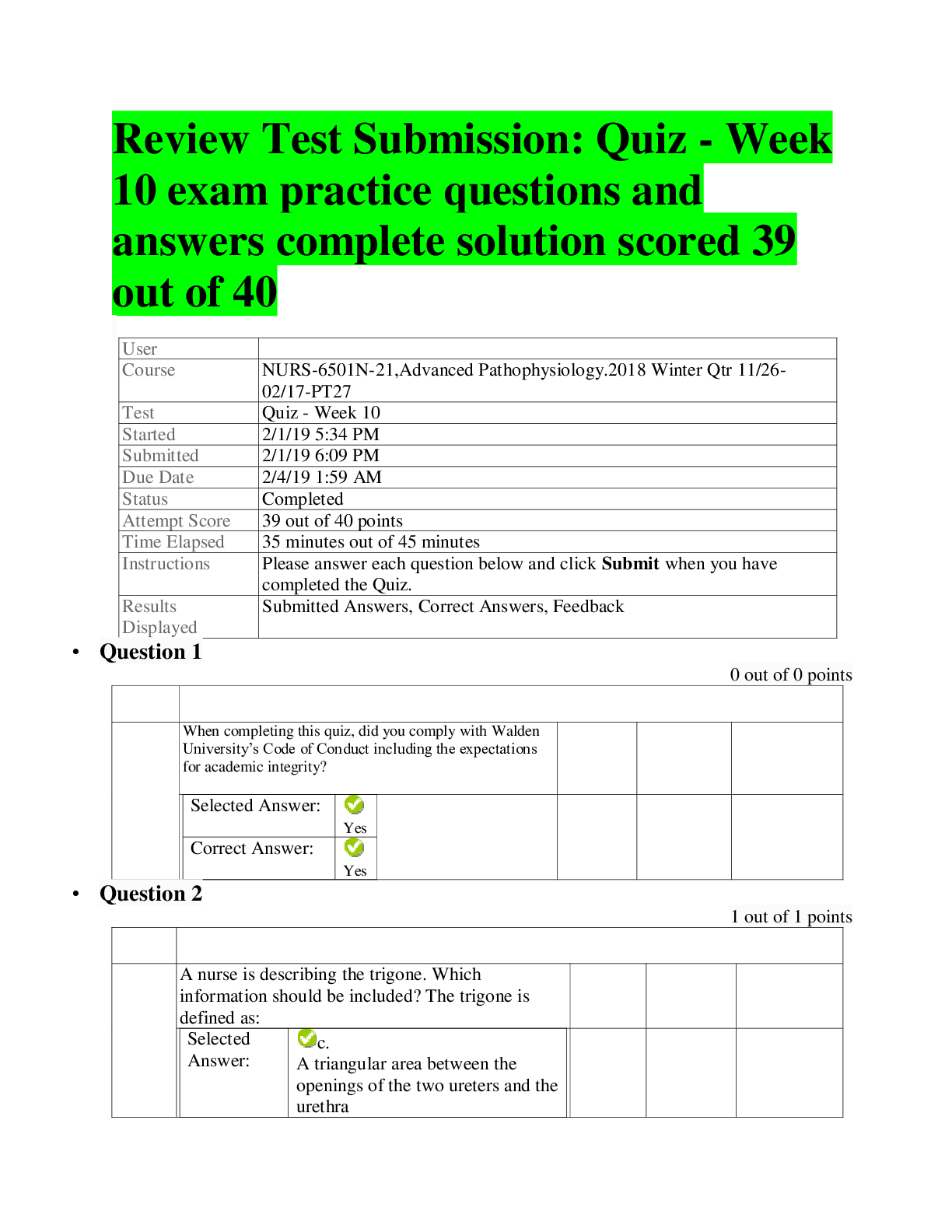
Reviews( 0 )
Document information
Connected school, study & course
About the document
Uploaded On
Feb 13, 2021
Number of pages
12
Written in
Additional information
This document has been written for:
Uploaded
Feb 13, 2021
Downloads
0
Views
18




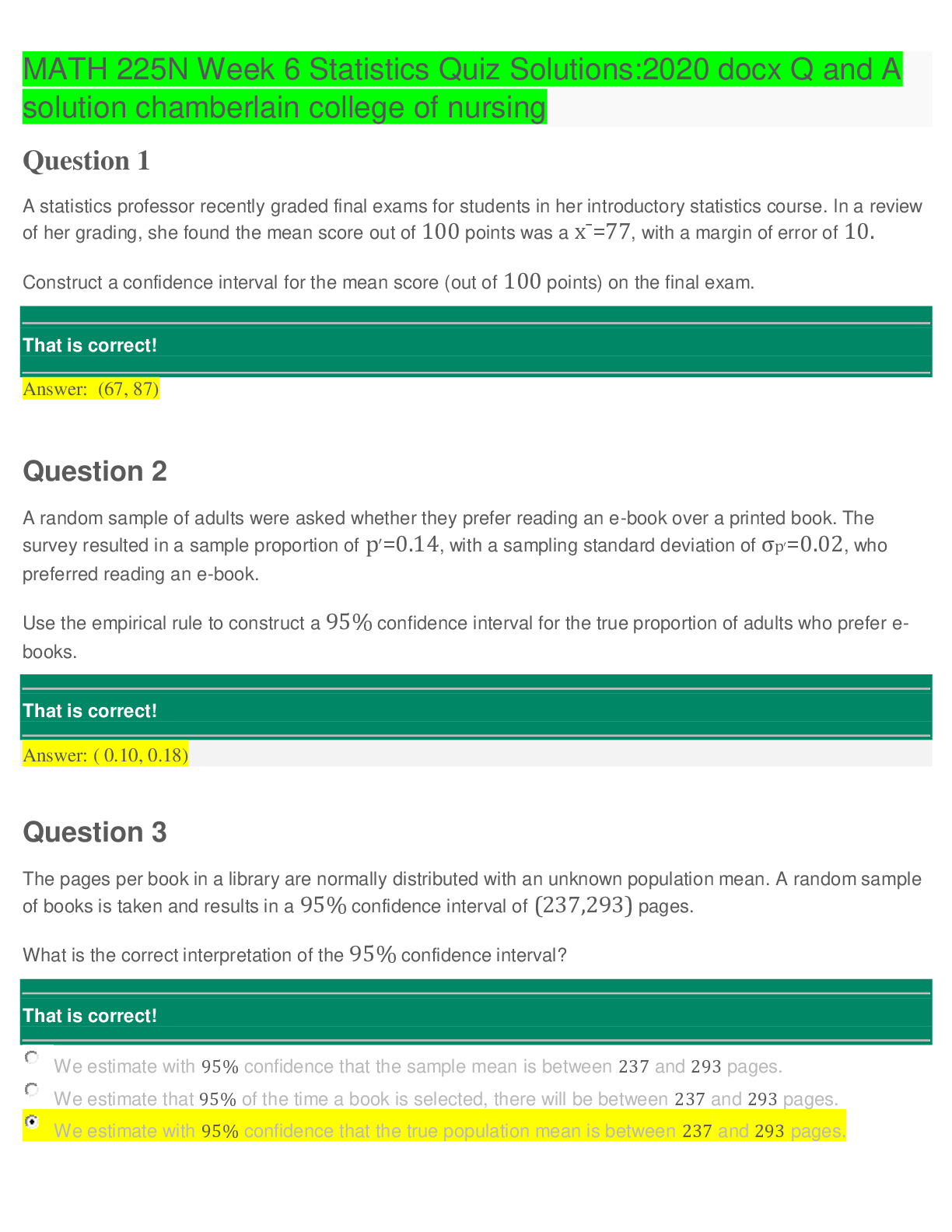

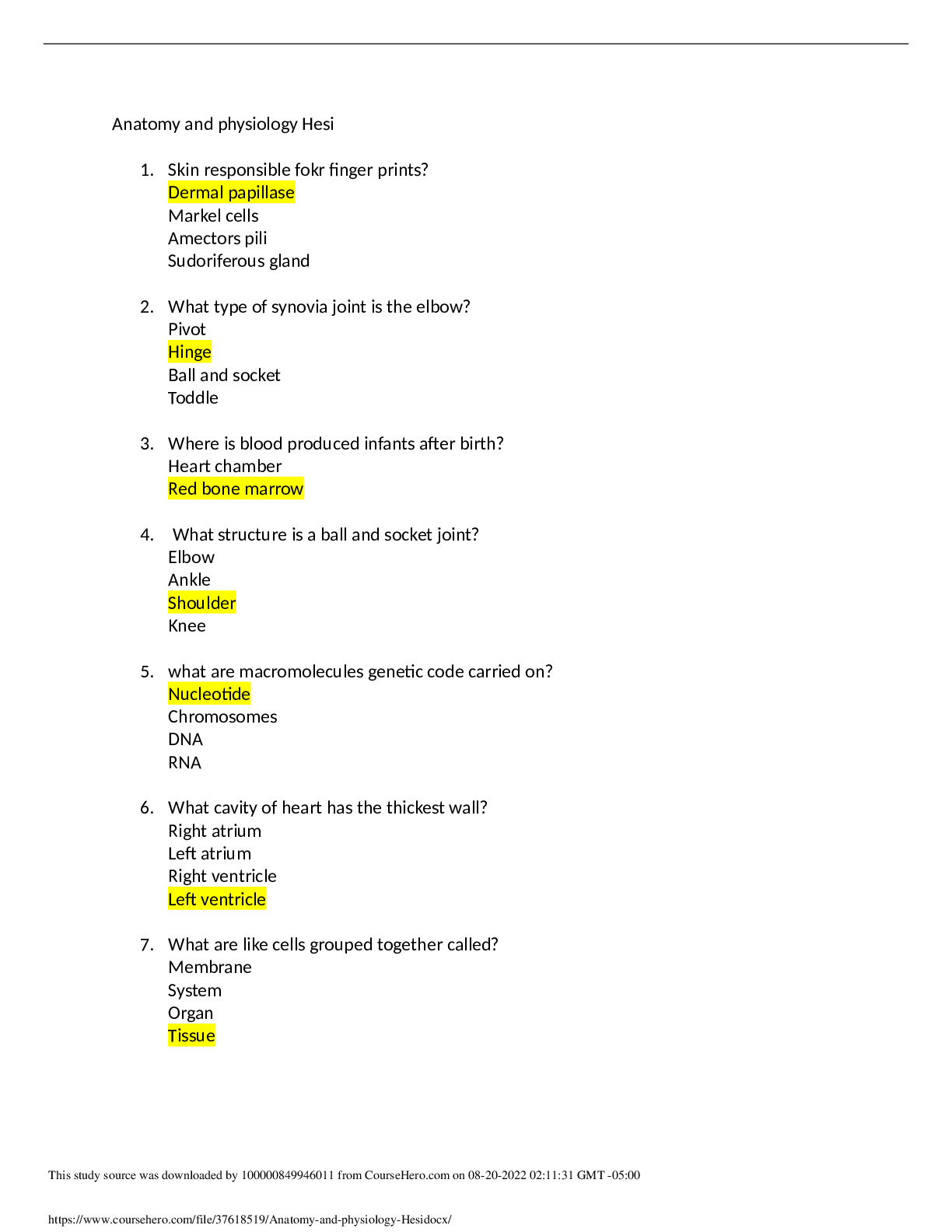

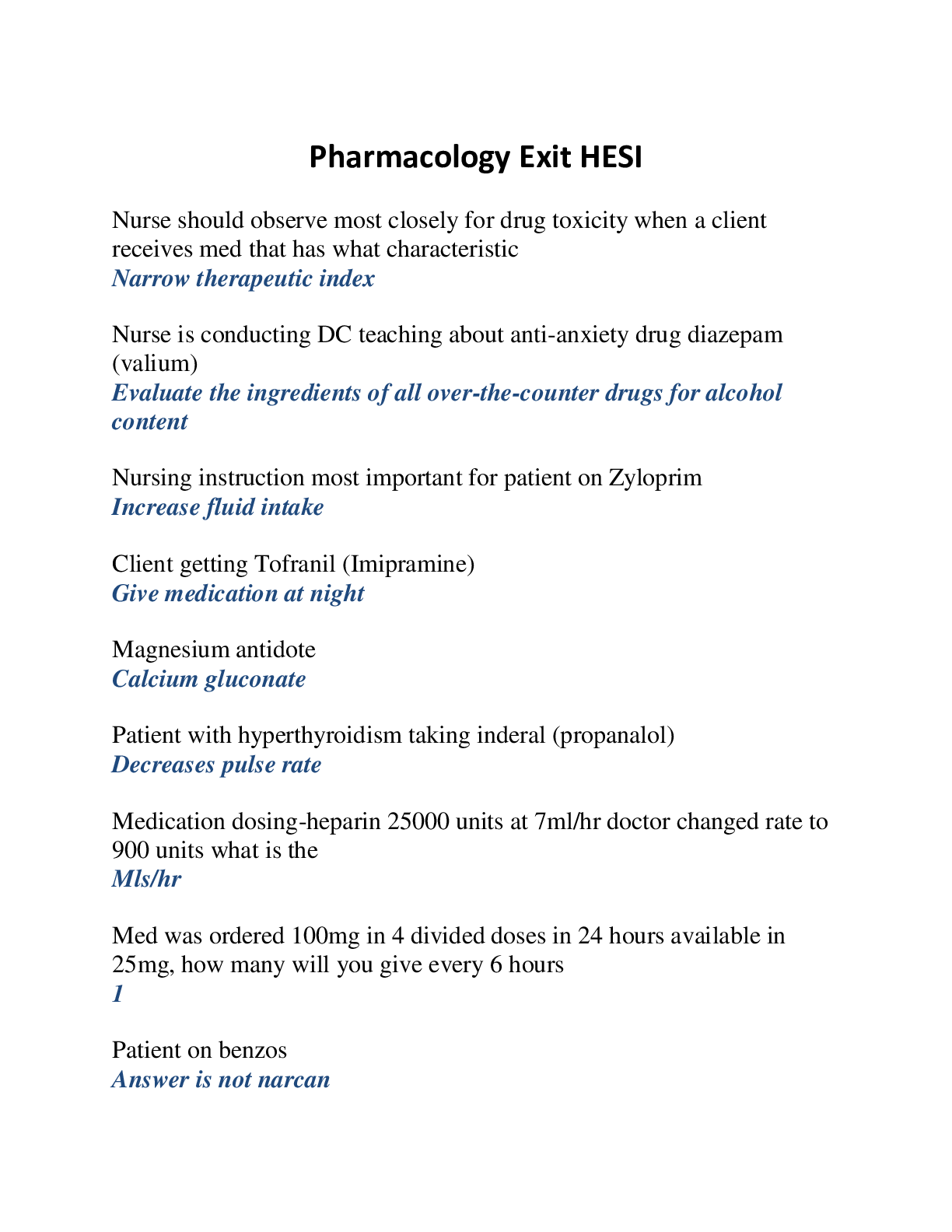
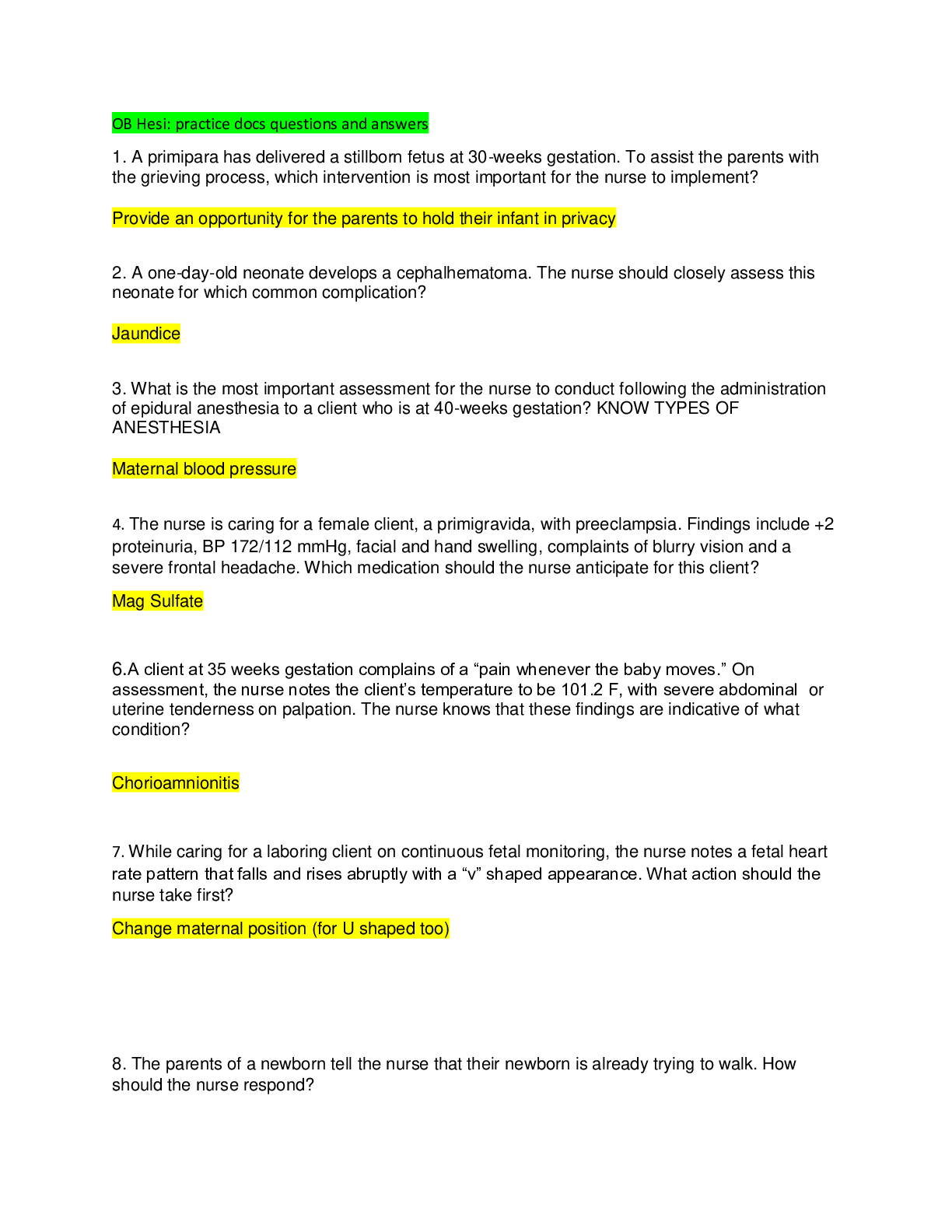
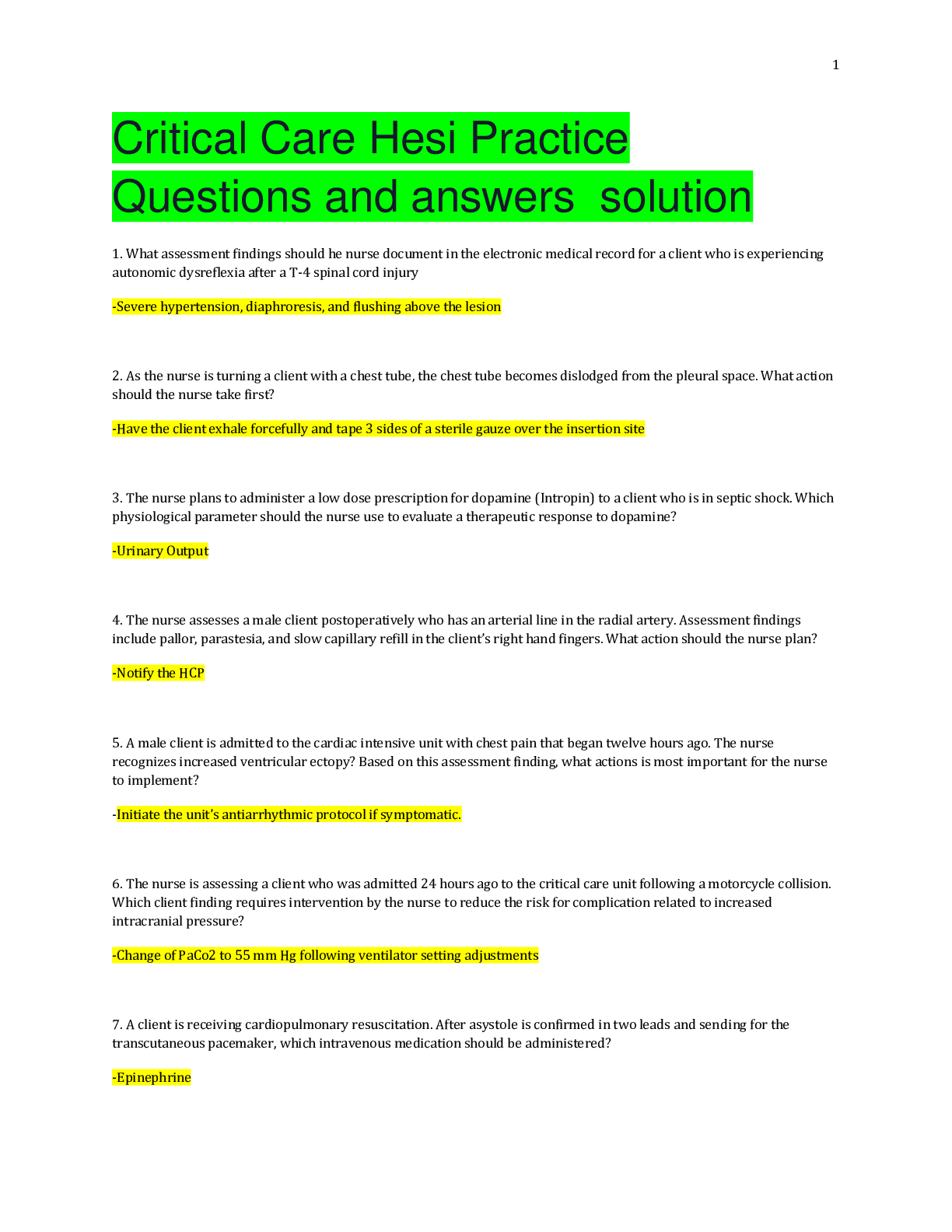
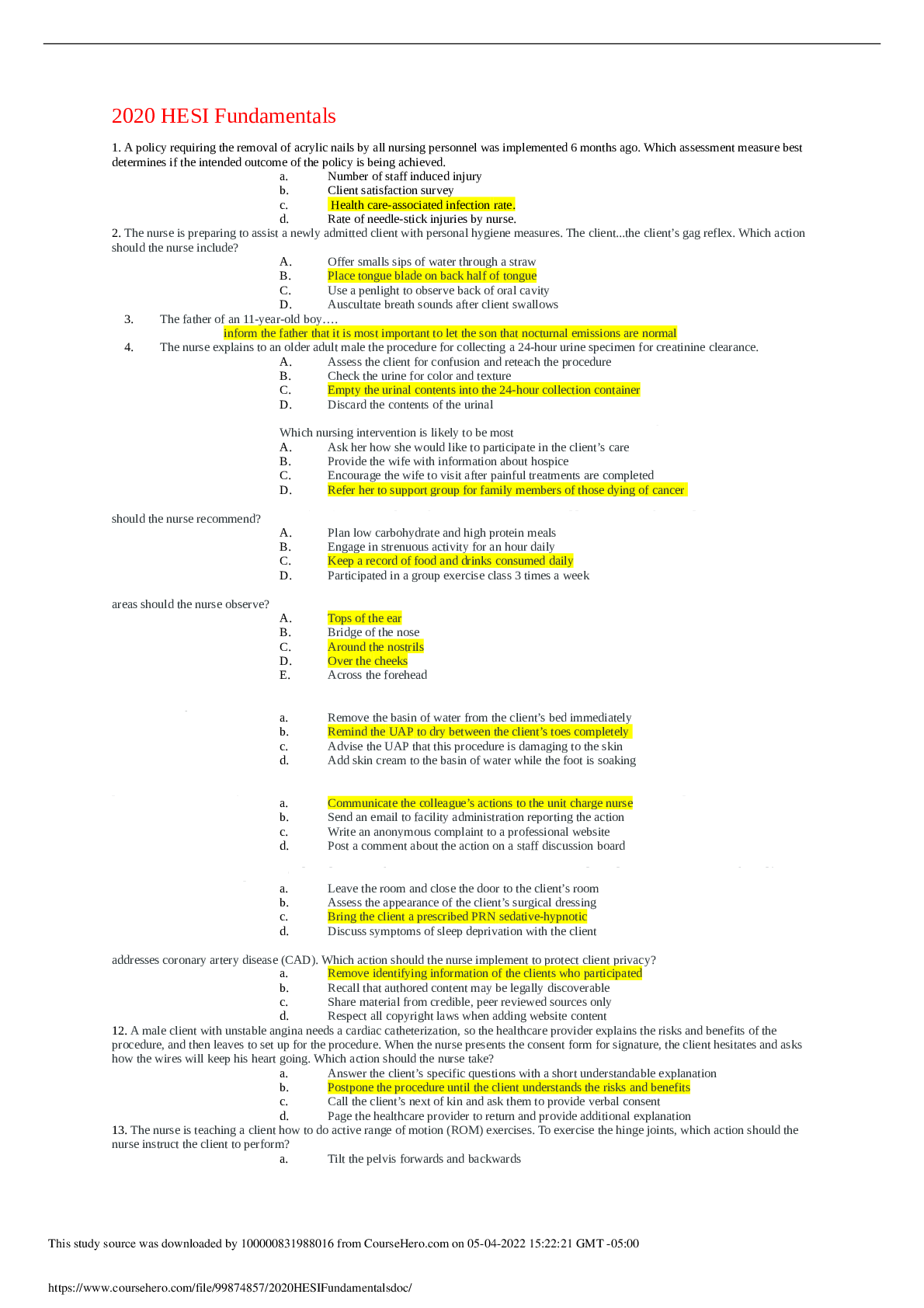

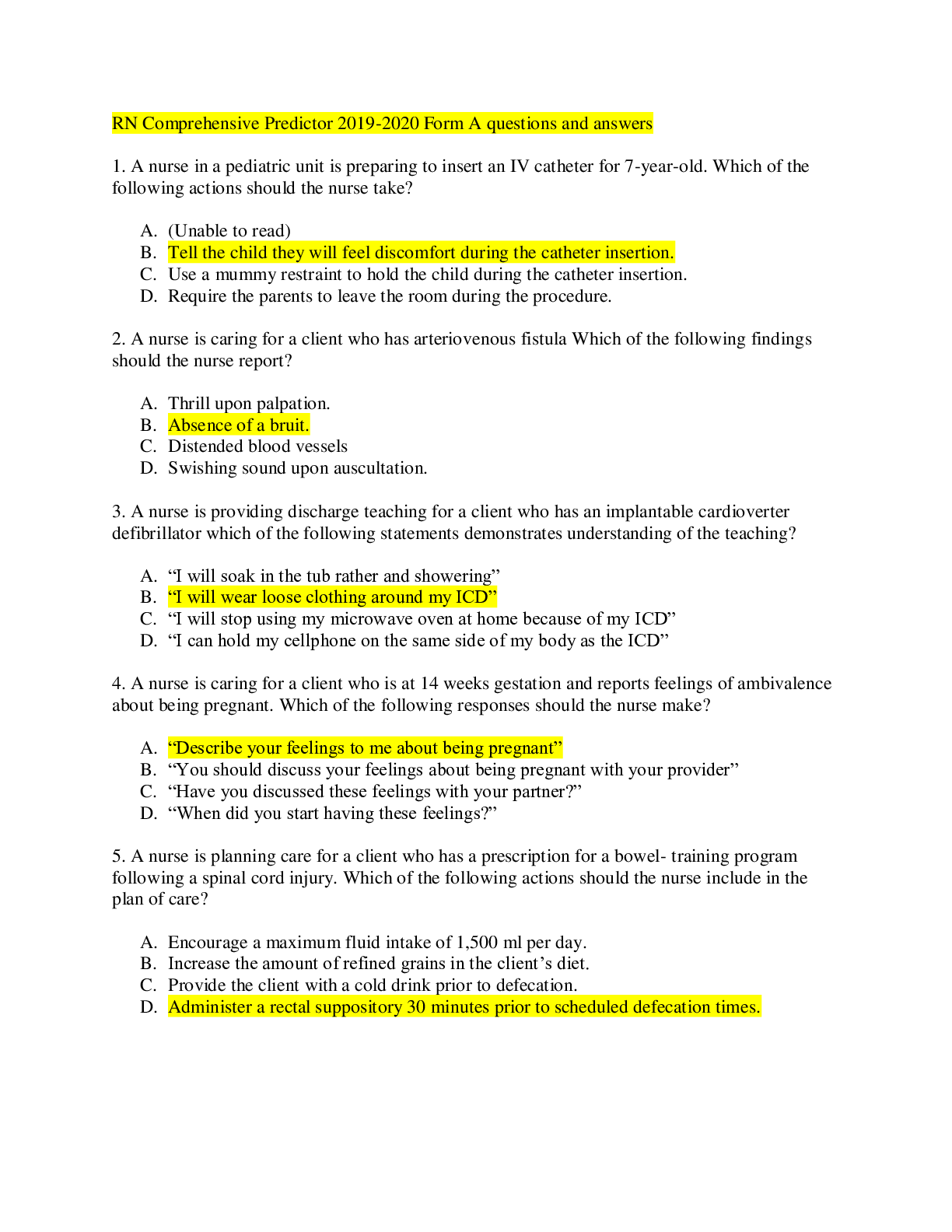

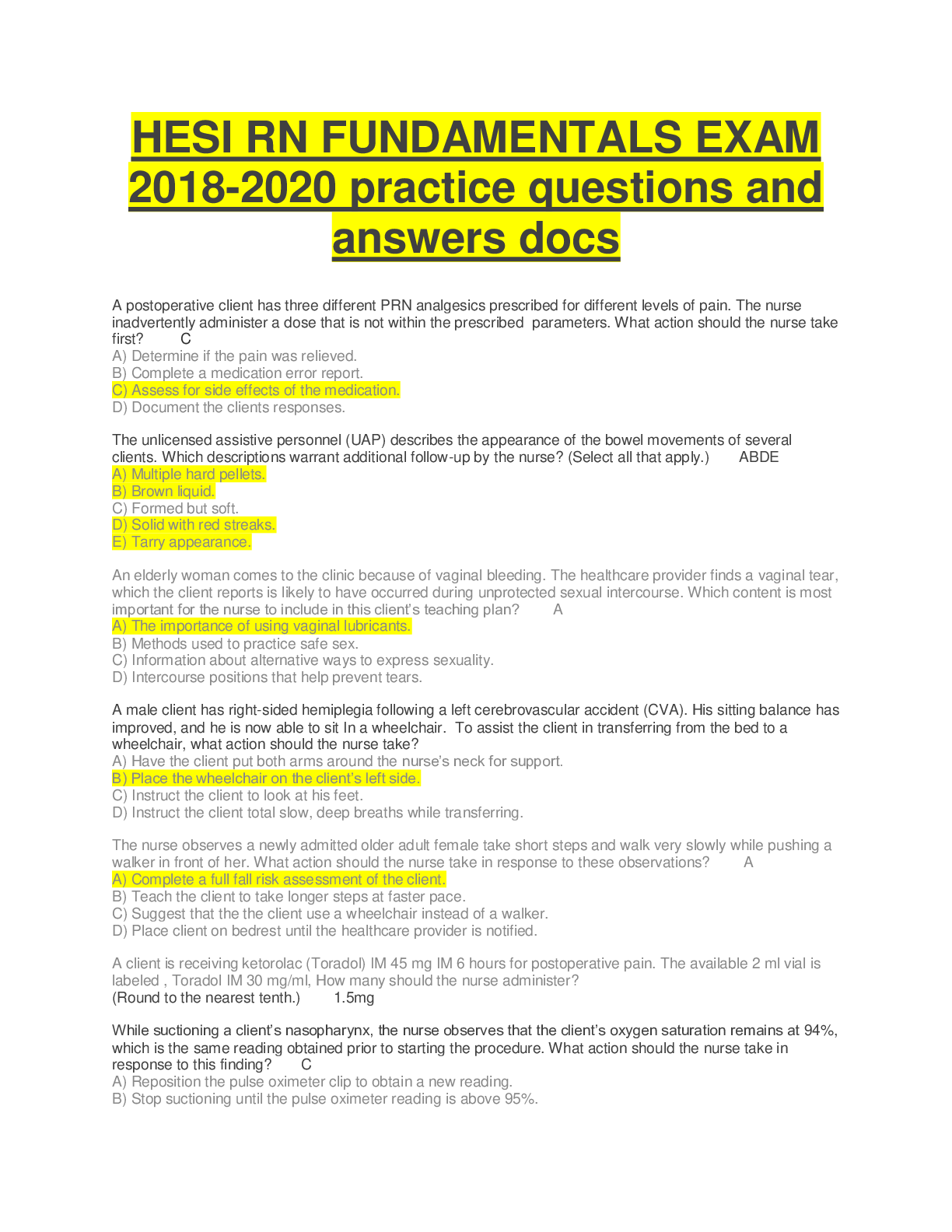
 2020 ans.png)
.png)
.png)

.png)


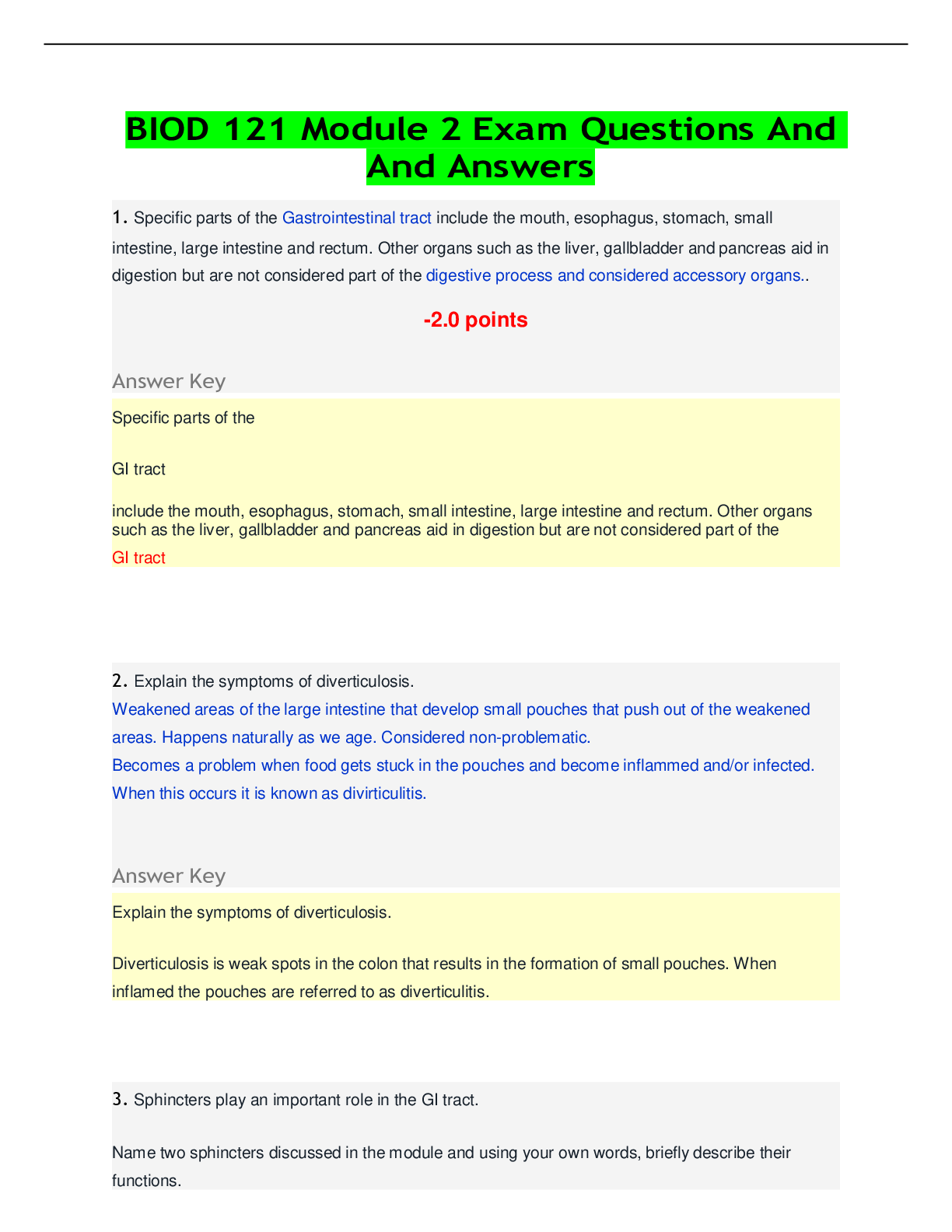
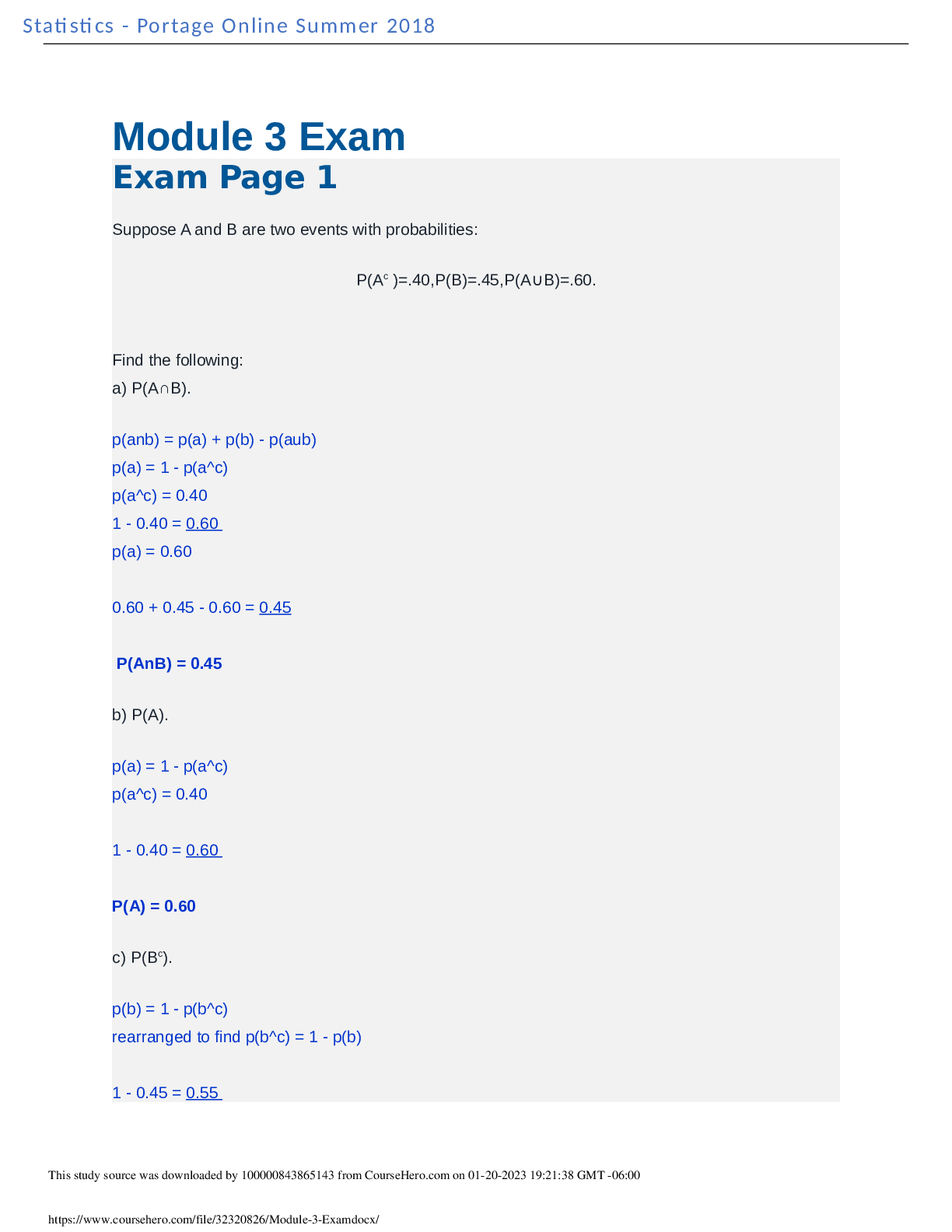

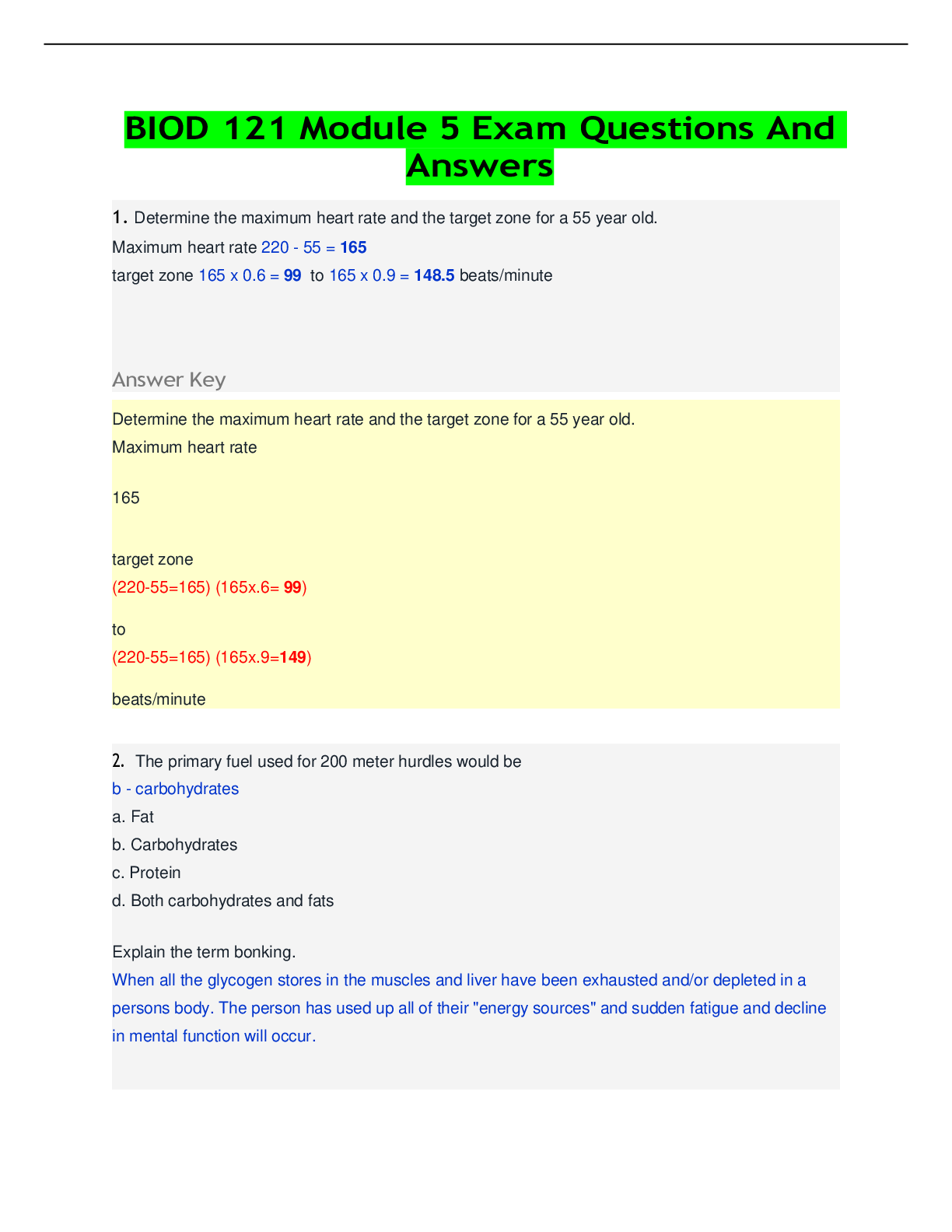
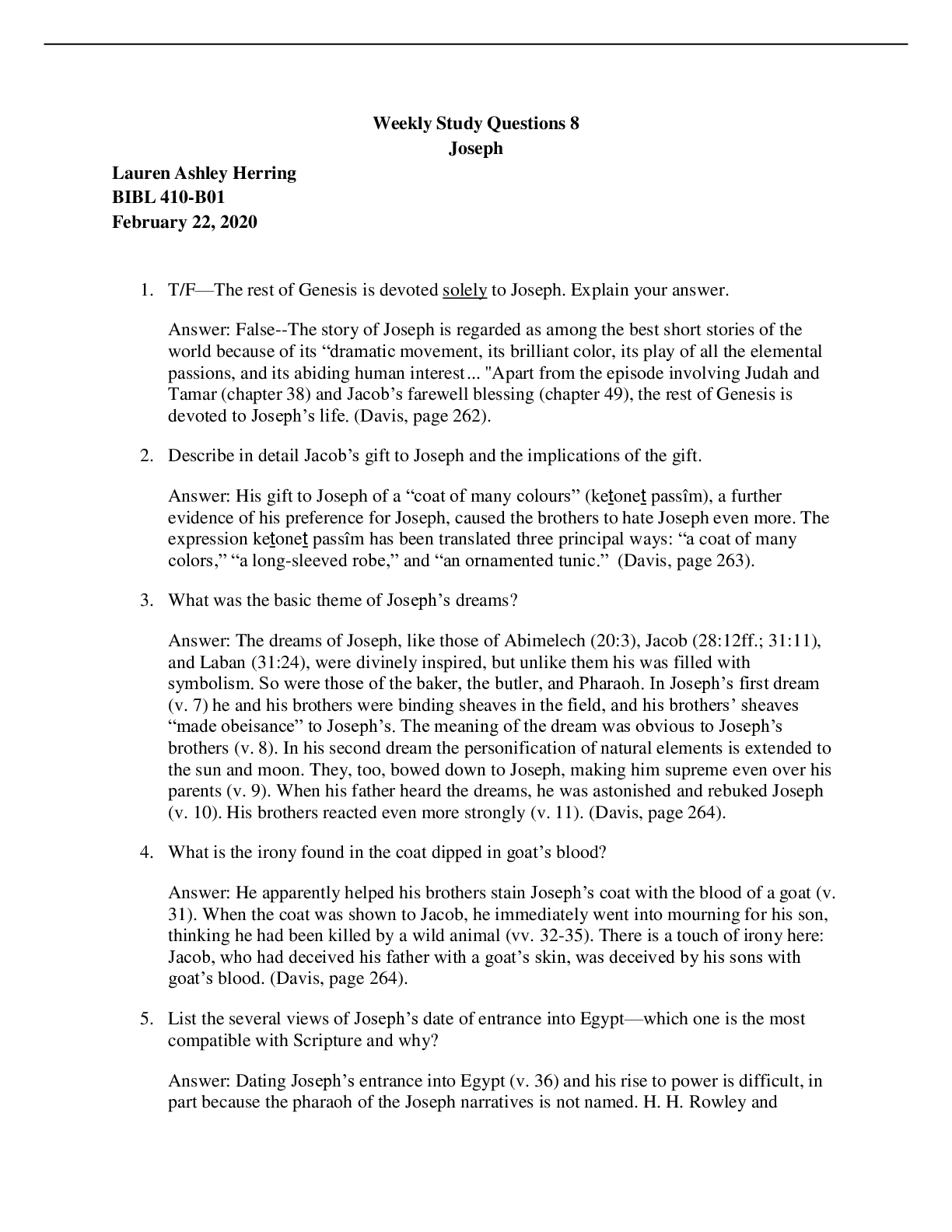
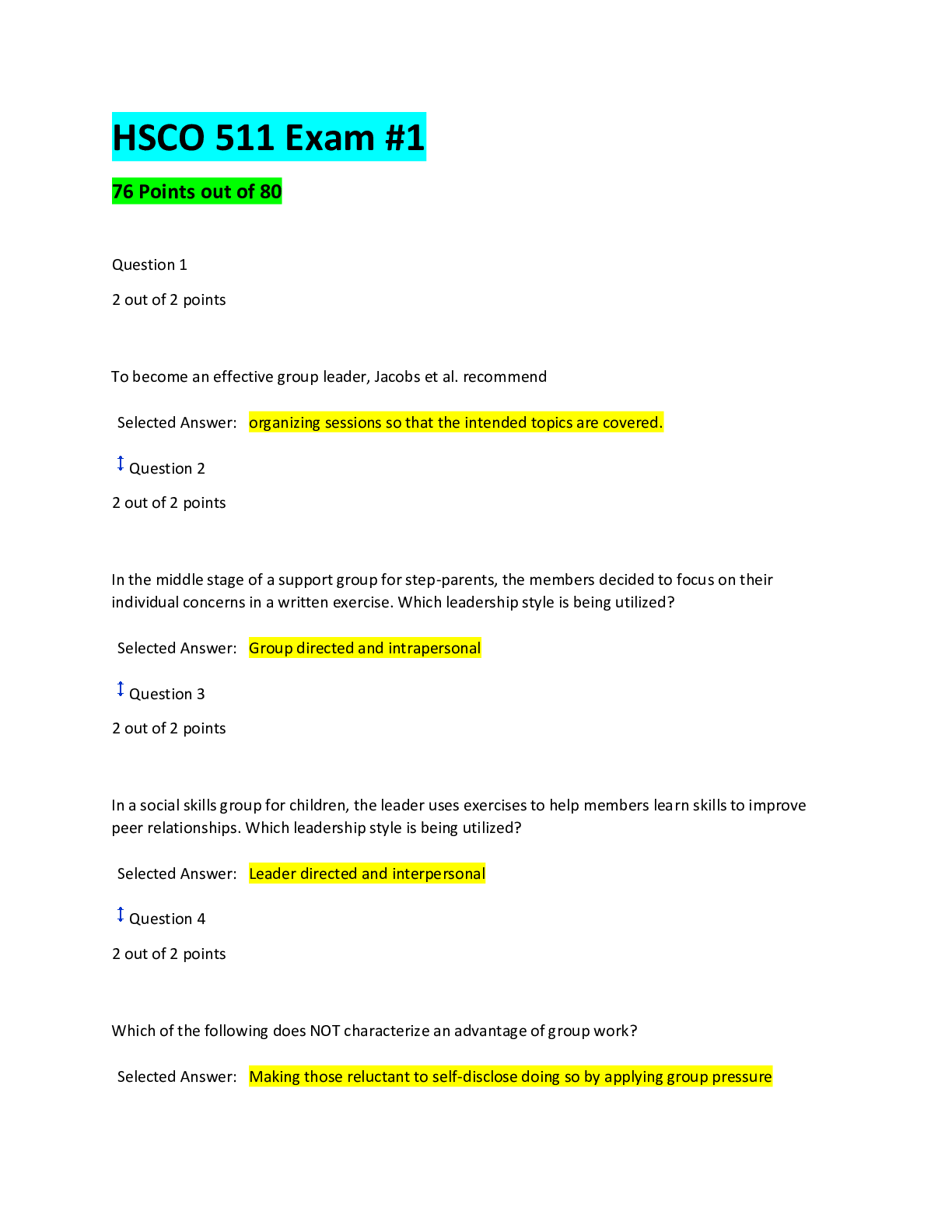
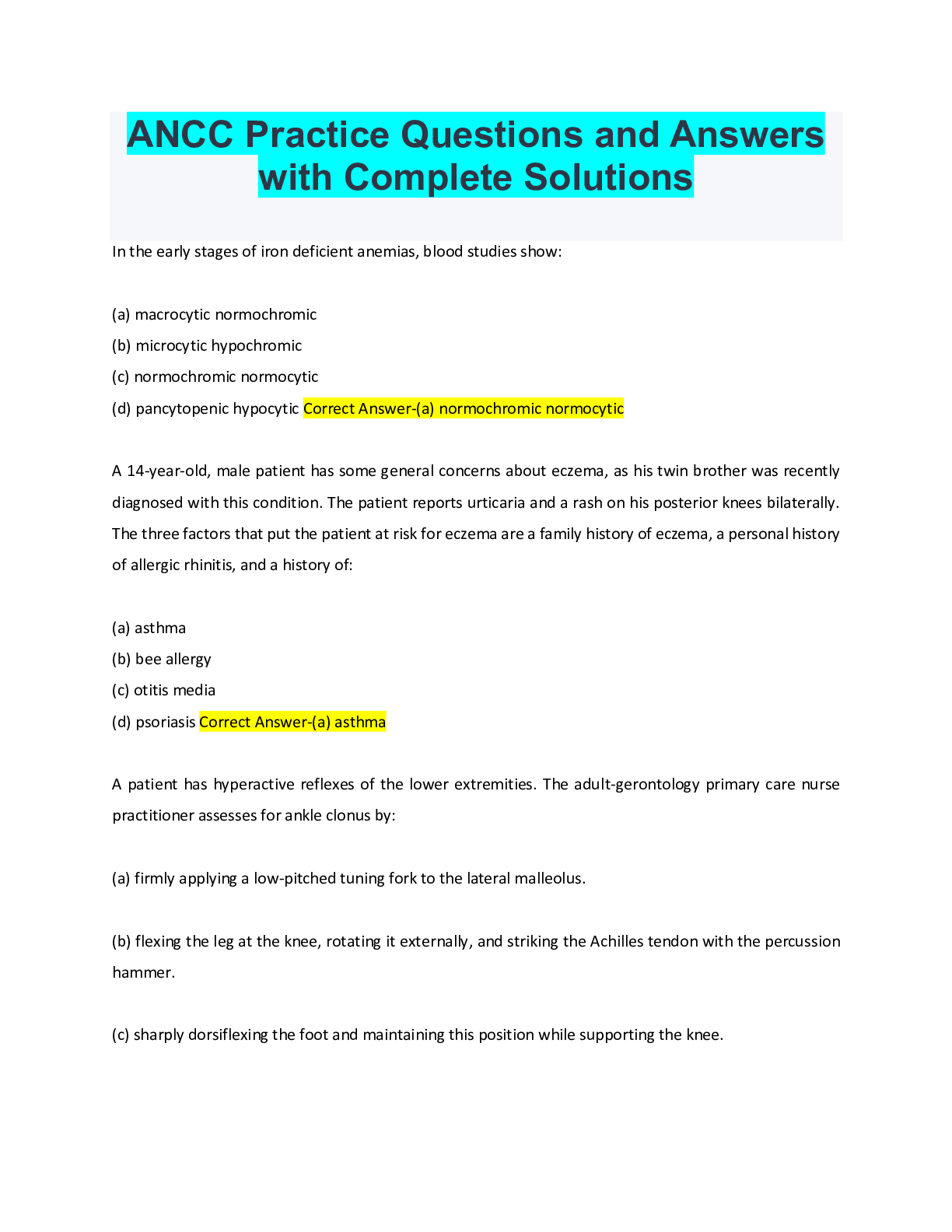
.png)
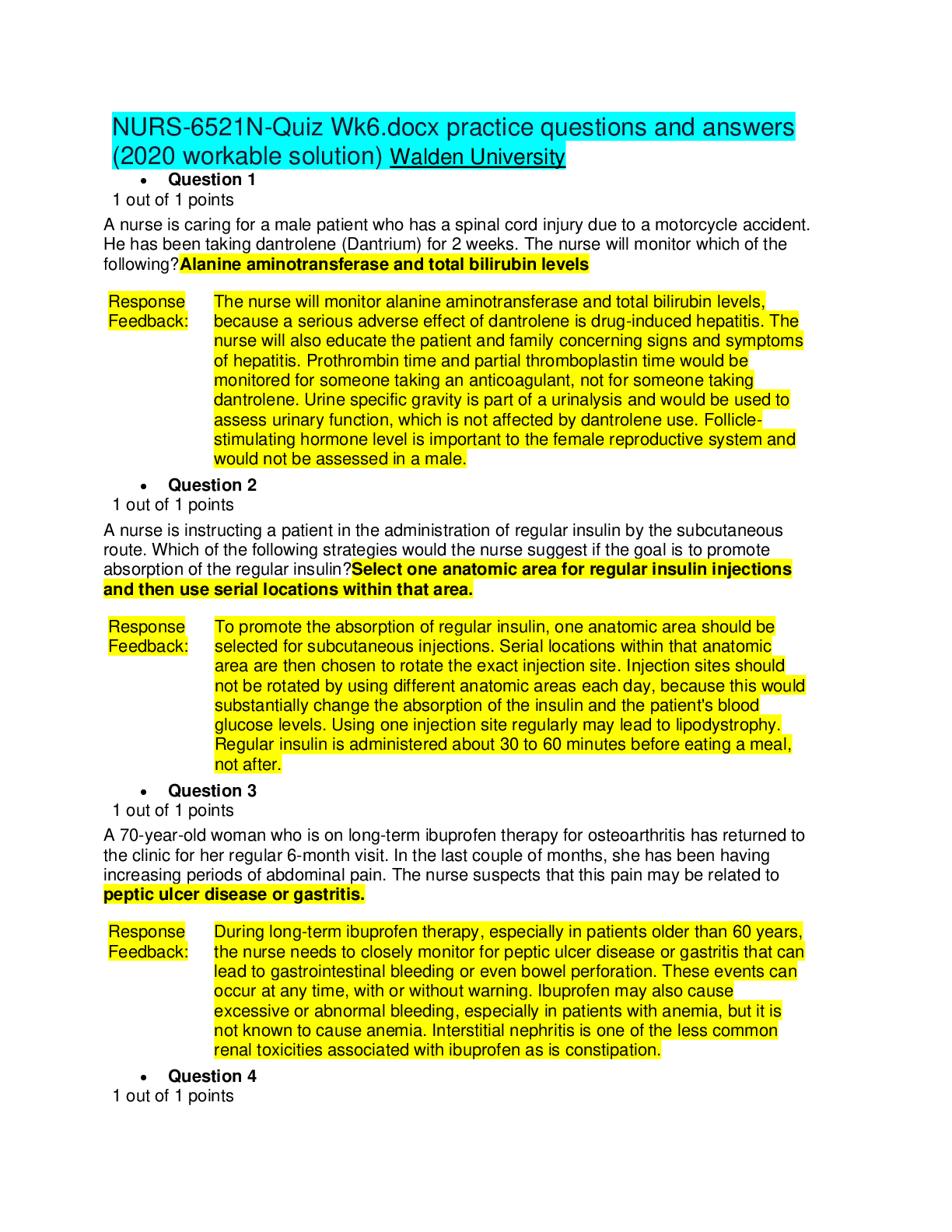

.png)

